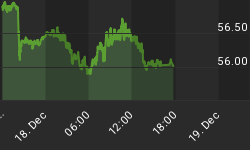The repudiation by the markets of Federal Reserve policy is almost complete. Economic numbers continue to deteriorate, but from the beginning, Fed policy has not been about the economy. The markets have benefited from QE, and the current run up in asset prices prior to QE3 would suggest that investors quickly learned a winning behavior over the past 3 years. If the markets convincingly break the QE3 announcement lows, then QE3 is a failure for both the markets and the economy. The Bernanke put will be considered dead. If so, both asset prices and the economy will likely sink. Of course, the market will do its best to create that bullish spin. However, there will be little help from the sentiment picture as the data remains consistent with a market top or the late stages of the rally. There are too many bulls, and company insiders remain net sellers.
The "Dumb Money" indicator (see figure 1) looks for extremes in the data from 4 different groups of investors who historically have been wrong on the market: 1) Investors Intelligence; 2) MarketVane; 3) American Association of Individual Investors; and 4) the put call ratio. This indicator is bearish, and just above the extremely bullish level.
Figure 1. "Dumb Money"/ weekly
Figure 2 is a weekly chart of the SP500 with the InsiderScore "entire market" value in the lower panel. From the InsiderScore weekly report: "A Sell Bias remains intact across the market, however, a seasonal decline in insider trading volume has begun and will continue for the next two-to-four weeks as companies close trading windows, prohibiting insiders from trading until after Q3'12 earnings are announced."
Figure 2. InsiderScore "Entire Market" value/ weekly
Figure 3 is a weekly chart of the SP500. The indicator in the lower panel measures all the assets in the Rydex bullish oriented equity funds divided by the sum of assets in the bullish oriented equity funds plus the assets in the bearish oriented equity funds. When the indicator is green, the value is low and there is fear in the market; this is where market bottoms are forged. When the indicator is red, there is complacency in the market. There are too many bulls and this is when market advances stall. Currently, the value of the indicator is 71.82%. Values less than 50% are associated with market bottoms. Values greater than 58% are associated with market tops. It should be noted that the market topped out in 2011 with this indicator between 70% and 72%.
Figure 3. Rydex Total Bull v. Total Bear/ weekly
TheTechnicalTake offers a FREE e-newsletter: HERE















